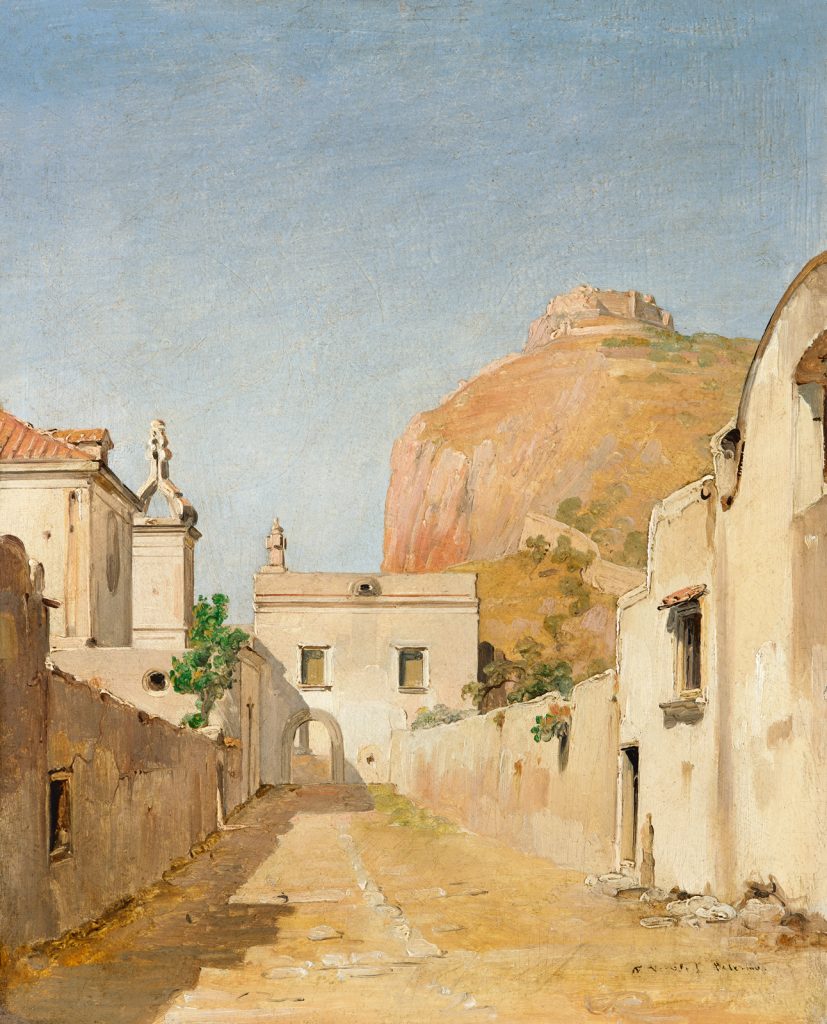Frans Vervloet (Mechelen 1795 - 1872 Venice)
A Street in Palermo, c.1840
Oil on cardboard, 26.5 x 21.5 cm
Signed and inscribed lower right F. Vervloet Palermo
Soon after his move from Rome to Naples in 1824[1] the Belgian painter Frans Vervloet was introduced to Ferdinand II, King of the Two Sicilies. In 1840, the King granted him a commission to depict two vedute in Palermo – View of Palermo Cathedral and Interior View of the Cappella Palatina. The latter was shown at the annual exhibition in the Real Museo Borbonico in Naples in 1841.[2]
Vervloet’s artistic aspirations were closely associated with those of the so-called ‘School of Posillipo’, a group of landscape painters working in Naples in the period 1820 to about 1850. The group’s objective was to revive interest in the eighteenth-century veduta tradition, which they aimed to renew through close study of the natural world. To this end painters worked en plein air directly before the motif. Vervloet’s contacts with the group developed out of his friendship with the Dutch painter Anton Sminck Pitloo (1790-1837) who had settled in Naples and was active as a teacher of landscape painting. Pitloo was the driving force behind the School of Posillipo.
This view executed in Palermo attractively combines architecture and landscape. A narrow street follows the line of vision, which is halted by a square building with an archway set at right angles, clarifying the pictorial depth of the view. In the background, set against a steely blue sky, stands the massive promontory of Monte Pellegrino with its cliff-top fortress. Vervloet allows transparent areas of untouched ground to gleam through, creating bold contrasts of light and shade. Although many of his large-format, finished paintings are peopled with genre scenes in this study he chooses to dispense with staffage in order to focus on the effects of light.
[1] On Frans Vervloet, see Denis Coeckelberghs, ‘Francois Vervloet’, in Les peintres belges à Rome de 1700 à 1830, Brussels 1976, pp. 328-49. [2] See Ulrich Thieme and Felix Becker, Allgemeines Lexikon der bildenden Künstler von der Antike bis zur Gegenwart, XXXIV, 1940, p. 305.

